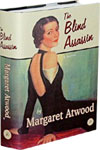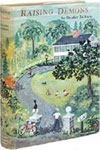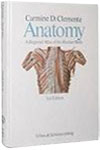Die Blutserumtherapie, I.+II. (all publ.)
Behring, Emil v.
From
Antiq. F.-D. Söhn - Medicusbooks.Com, Marburg, Germany
Seller rating 5 out of 5 stars
![]()
AbeBooks Seller since 12 January 2006
About this Item
Description:
Leipzig, Georg Thieme Verlag, 1892, 8°, 66; 122 pp., 2 geprägte orig. Leinenbände; St.a.Tit.; Einbände berieben; frisches Expl. First Edition of "The Tetanus Healing Serum and the Determination of its Healing Value". Content: I/1: Die praktischen Ziele der Blutserumtherapie. I/2: Ueber Immunisirungsmethoden zum Zweck der Gewinnung von Heilserum. II : Das Tetanusheilserum und seine Anwendung auf tetanuskranke Menschen. Die Blutserumtherapie II - " . contained a number of articles in which Behring reported on specific experiments during which he and Dr. Casper, a faculty member at Berlin's Veterinary School, had cured horses with tetanus as well as an article in which he discussed the first clinical applications in Germany to patients whose lives were endangered by tetanus infections." "Behring declares that until the actual healing agent in antitoxins could be isolated, nothing definitive could be said about its chemical nature. Although Behring thought that it was important to discover the chemical composition of antitoxin, he nonetheless strongly believed that creating a safe and effective therapeutic agent was a more worthwhile and significant short-term task. Moreover, the chemical composition could only be determined by experiment, not by a priori theoretical considerations. The Munich hygienist and immunologist Hans Buchner, the discoverer of alexin (complement), who had conducted a long series of polemics against Koch and his disciples, tried repeatedly to assimilate Behring's antitoxins to alexin. Here Behring disputes this identification by pointing out that not only were antitoxins not preformed before the introduction of the toxin, but they were also far more physically and chemically stable than Buchner's alexins. Likewise, Behring's Italian rival Guido Tizzoni declared that he had been able to isolate and concentrate the effective therapeutic agent in serum antitoxins, a declaration Behring greeted with skepticism given the limited therapeutic efficacy of Tizzoni's powder. More important is Behring's account of the difficulties he encountered in standardizing antitoxin and determining accurate curative doses. Although he believed that there was a precise relation between the ability of an antitoxin to immunize and to heal, here for the first time he explains at length why, given the complexity of the disease process, he uses the immunization value, rather than the curative value, as the measure of potency. This quantitative measure subsequently was adopted by Ehrlich as well, since he was persuaded by Behring's cogent arguments. Thus, this article makes an important contribution to drug standardization. In the final section of the article, Behring endorses statistical analysis as the appropriate method to decide the efficacy of tetanus serum for humans, since infections could not be willfully controlled as they could be in laboratory animals. Since a small percentage of cases healed spontaneously, the therapeutic efficacy of tetanus serum could easily be overestimated and overstated. Serum therapy could only be considered effective for humans if it substantially reduced mortality rates. He expected that if treatment began soon after infection, tetanus mortality could be reduced from around 80 percent, probably a significant overstatement of real mortality, to about 25-30 percent. Some medical historians have suggested that Behring oversold serum therapy, announcing a miracle cure or magic bullet, a phrase that Behring never used, incidentally. Instead, Behring's circumspect prediction attests to his clear-eyed realism and well-founded caution when making claims about therapeutic benefits during the early 1890s." Derek S. Linton, Emil von Behring (2005), pp.488-496. Seller Inventory # 42935
Bibliographic Details
Title: Die Blutserumtherapie, I.+II. (all publ.)
Publication Date: 1892
Binding: Hardcover
Edition: 1st Edition
AbeBooks offers millions of new, used, rare and out-of-print books, as well as cheap textbooks from thousands of booksellers around the world. Shopping on AbeBooks is easy, safe and 100% secure - search for your book, purchase a copy via our secure checkout and the bookseller ships it straight to you.
Search thousands of booksellers selling millions of new & used books
New & Used Books
New and used copies of new releases, best sellers and award winners. Save money with our huge selection.
Rare & Out of Print Books
From scarce first editions to sought-after signatures, find an array of rare, valuable and highly collectible books.



